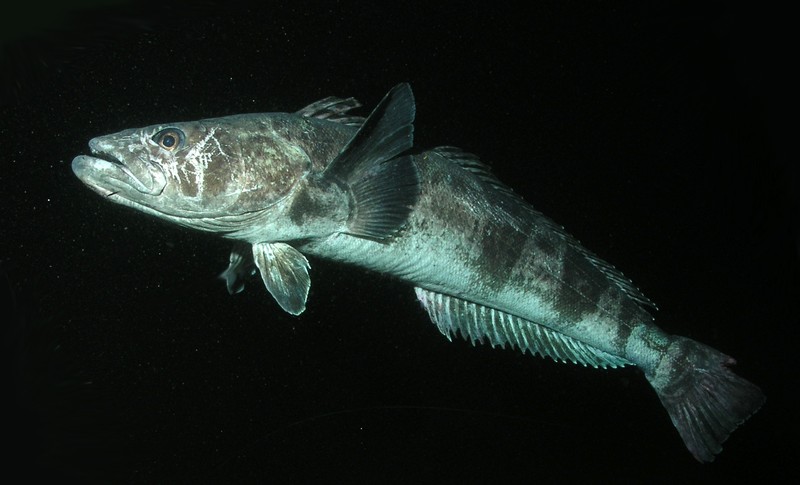 In the freezing and dark waters of the Antarctic, two marine species are pitted against each other in a battle of survival. Each of the players in the evolutionary game is trying to avoid a permanent residency in the other’s stomach. One of the competitors, you may not be surprised by. The behemoth colossal squid can reach sizes of sizes of 495 kg (1091 lbs) and 4.2 meters (13.8 feet). The colossal squid’s competitor? The Antarctic toothfish reaching a puny 200 cm (6.5 feet) and 80 kg (176 pounds) in length at is biggest. Not exactly the size to take on the hooked tentacular mass of a colossal squid. Yet attacks and feedings of this two biological killing machines on each other occurs frequently in the natural world’s answer to Alien vs. Predator.
In the freezing and dark waters of the Antarctic, two marine species are pitted against each other in a battle of survival. Each of the players in the evolutionary game is trying to avoid a permanent residency in the other’s stomach. One of the competitors, you may not be surprised by. The behemoth colossal squid can reach sizes of sizes of 495 kg (1091 lbs) and 4.2 meters (13.8 feet). The colossal squid’s competitor? The Antarctic toothfish reaching a puny 200 cm (6.5 feet) and 80 kg (176 pounds) in length at is biggest. Not exactly the size to take on the hooked tentacular mass of a colossal squid. Yet attacks and feedings of this two biological killing machines on each other occurs frequently in the natural world’s answer to Alien vs. Predator.
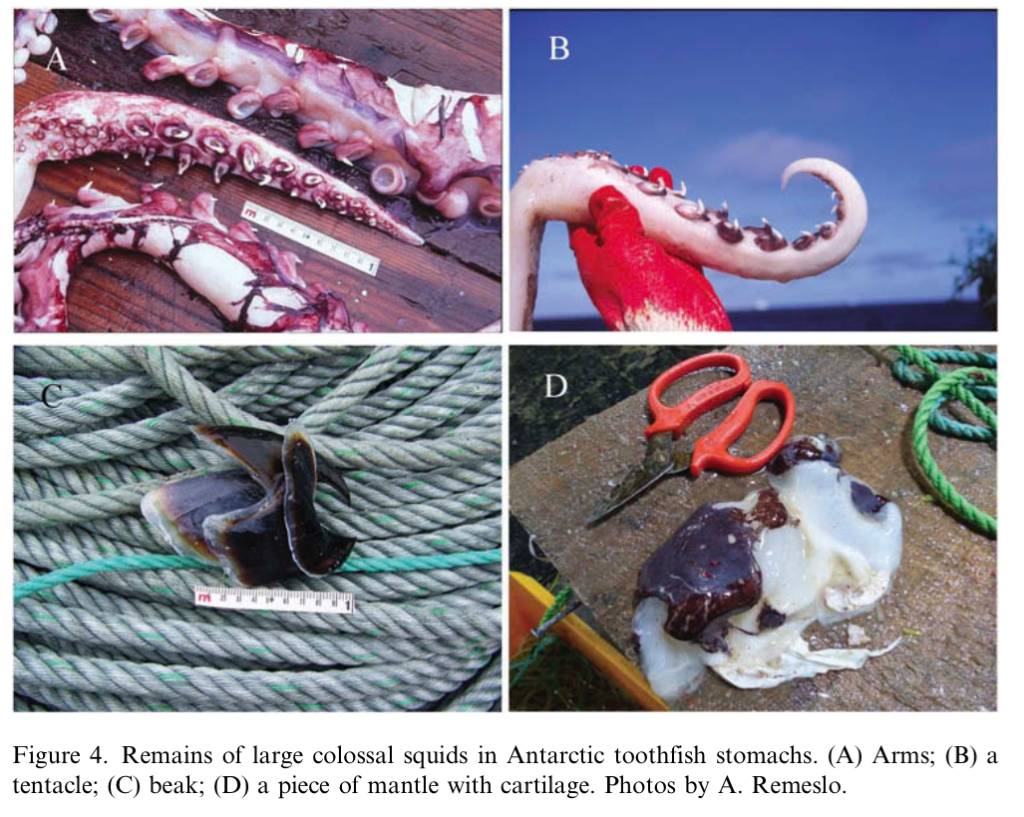 Remeslo and colleagues*** report 71 toothfish with deep wounds from squid beaks or scratches from suckers. Remains of colossal squids were found in the stomachs of 57 toothfish. The researchers estimated the size of colossal squids ranged in size from 1.2 to 2.4 meters (3.9-7.9 ft) and measured lengths of toothfish from 1.2 to 1.95 meters (3.9-6.4 ft). When the battle between the two is at its maximum, the sizes of the two species were comparable.
Remeslo and colleagues*** report 71 toothfish with deep wounds from squid beaks or scratches from suckers. Remains of colossal squids were found in the stomachs of 57 toothfish. The researchers estimated the size of colossal squids ranged in size from 1.2 to 2.4 meters (3.9-7.9 ft) and measured lengths of toothfish from 1.2 to 1.95 meters (3.9-6.4 ft). When the battle between the two is at its maximum, the sizes of the two species were comparable.
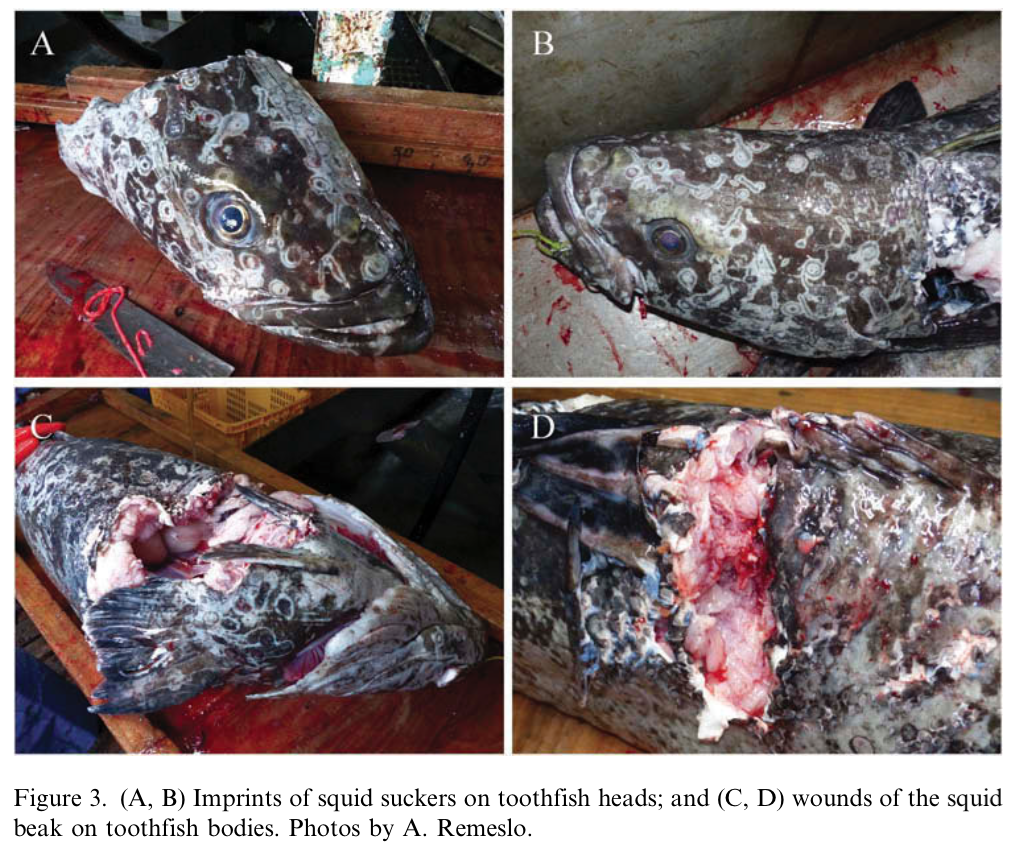 Antarctic toothfish as a predator turned out to be slightly larger (1.52 m, 4.99 ft) than when prey (1.48 m, 4.86 ft). Remelso report on one impressive finding in the stomach of a toothfish measuring 1.85 m (6.07 ft) long and 70 kg in weight. The stomach contents included a tentacle with two attached arms. The length of the tentacle was 2.42 m (7.94 ft) and the arms were 1.27 m (4.17 ft) and 1.14 m (3.74 ft).
Antarctic toothfish as a predator turned out to be slightly larger (1.52 m, 4.99 ft) than when prey (1.48 m, 4.86 ft). Remelso report on one impressive finding in the stomach of a toothfish measuring 1.85 m (6.07 ft) long and 70 kg in weight. The stomach contents included a tentacle with two attached arms. The length of the tentacle was 2.42 m (7.94 ft) and the arms were 1.27 m (4.17 ft) and 1.14 m (3.74 ft).
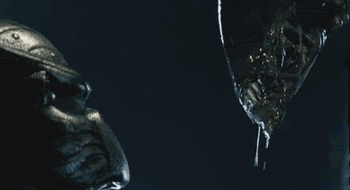 So how are Antarctic tootfish feeding on colossal squids? Their wimpy teeth are insufficient to rip the arms off a large squid. As Remelso explains, “One of the possible explanations for toothfish foraging on squids larger than themselves is that [toothfish] attacks dead and possibly dying [colossal squids]. This supposition might be inferred also from the diet of a bottom scavenger and ambush predator – the Antarctic sleeper shark Somniosus antarcticus – in which colossal squid occurred in 66.1% of stomachs and represented 52% of cephalopod prey (by weight) around the Kerguelen Islands.
So how are Antarctic tootfish feeding on colossal squids? Their wimpy teeth are insufficient to rip the arms off a large squid. As Remelso explains, “One of the possible explanations for toothfish foraging on squids larger than themselves is that [toothfish] attacks dead and possibly dying [colossal squids]. This supposition might be inferred also from the diet of a bottom scavenger and ambush predator – the Antarctic sleeper shark Somniosus antarcticus – in which colossal squid occurred in 66.1% of stomachs and represented 52% of cephalopod prey (by weight) around the Kerguelen Islands.
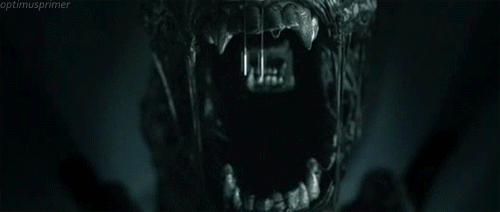 Or maybe they could try the flushing the toilet when colossal squids shower.
Or maybe they could try the flushing the toilet when colossal squids shower.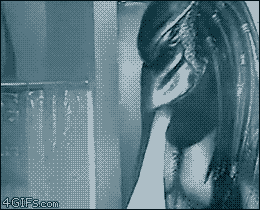
***Bonus points to the authors for the title
A.V. Remeslo, M.R. Yakushev & V. Laptikhovsky (2015): Alien vs. Predator: interactions between the colossal squid (Mesonychoteuthis hamiltoni) and the Antarctic toothfish (Dissostichus mawsoni), Journal of Natural History, DOI: 10.1080/00222933.2015.1040477
Share the post "The real Alien vs. Predator is occurring right now in Antarctic waters"





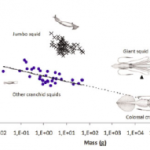
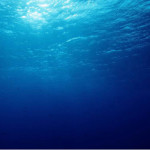
“their wimpy teeth are insufficient to rip the arms off a large squid” and “one of the possible explanations for toothfish foraging on squid larger than themselves is that the squid are dead/dying” which the author also infers for sleeper sharks with colossal squid in their stomach.
I would not be so quick to dismiss Antarctic toothfish and sleeper sharks as obligate scavengers of large dead/dying colossal squid nor elevate colossal squid to the level of active top predator. The colossal squid might be a little too hyped in these regards and when push comes to shove actually a bit of a gelatinous slow poke. Arms easily wrenched off through seizing and rotating/twisting in manner similar to what moray eels do to wrench tentacles off of octopi. Additionally field studies of the genus Somniosus highlight it as a slow, cryptic but very capable predator of quite large and active prey (pinnipeds, pelagic fish). Actual predation better explains the preponderance of squid remains in both sleeper shark and toothfish stomachs as opposed to a scenario in which we are forced to imagine so many dead and dying colossal squid that they occur in over 66% of southern sleeper shark stomachs.